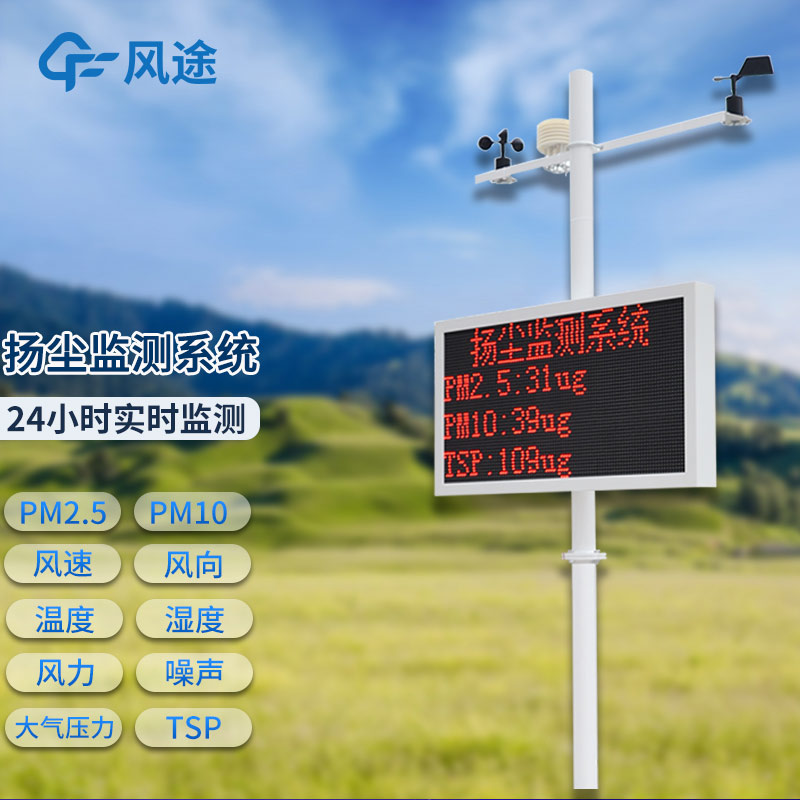Shandong Fengtu IOT Technology Co., Ltd
Sales Manager:Ms. Emily Wang
Cel,Whatsapp,Wechat:+86 15898932201
Email:info@fengtutec.com
Add:No. 155 Optoelectronic Industry Accelerator, Gaoxin District, Weifang, Shandong, China

Sales Manager:Ms. Emily Wang
Cel,Whatsapp,Wechat:+86 15898932201
Email:info@fengtutec.com
Add:No. 155 Optoelectronic Industry Accelerator, Gaoxin District, Weifang, Shandong, China
time:2025-05-26 09:19:19 source:Weather Station viewed:315 time
The working principles of dust detectors are mainly divided into two types: diffusion type and pump suction type, and users can choose according to actual usage scenarios and monitoring needs.
Diffusion-type dust detectors utilize laser scattering technology, with a built-in fan to drive air flow and an anti-insect net design to effectively prevent interference from mosquitoes, catkins, etc. They are suitable for conventional construction site environments.
Pump suction-type dust detectors, powered by a high-pressure air pump and combined with a straight-through cavity structure, fundamentally eliminate dust accumulation. Equipped with a built-in heating and dehumidification module, they can operate stably in high-humidity environments such as rainy or foggy days, avoiding the problem of PM value spikes caused by rain or fog. They are suitable not only for ordinary construction sites but also for high-dust and high-humidity scenarios such as mines and docks.
Dust detectors measure not only PM but also meteorological parameters. In construction site pollution control, the generation and diffusion of dust are closely related to meteorological conditions. Temperature and humidity can alter the adsorbability of particulate matter, wind speed and direction directly affect the pollution diffusion range, and atmospheric pressure is related to the measurement accuracy of monitoring equipment.
Related dust detectors can also form a dust monitoring and alarm system together with a dust cloud platform and a 4G voice alarm. The system can effectively collect and analyze various meteorological data, transmit the collected data to the dust cloud platform, and realize remote viewing of data and remote management of equipment. When the monitored data exceeds the standard, the system will link 4G voice alarms at different locations to remind users to take timely actions through voice broadcasts, phone alerts, and SMS content broadcasts.
Users can log in to the dust cloud platform via a PC or a dust app to view real-time information on environmental factors such as temperature, humidity, noise, light, PM10, PM2.5, TSP, wind speed, wind direction, and atmospheric pressure. The platform also supports viewing, exporting, and printing historical data for any time period. It features functions such as regional and project management, multi-account login, as well as a device visualization interface and large-screen visualization design, facilitating staff monitoring and quick summarization of environmental issues.

The construction of the Internet of Things meteorological monitoring system needs to be based on modern information technology. The new model based on the combination of Internet of Things technology with computer technology and communication network technology is a meteorological observation method...
agricultural sensors are used to detect information about the growing environment of agricultural crops, such as air temperature and humidity, light intensity, carbon dioxide and other data required for field cultivation....
When selecting a suitable wind sensor for an automatic weather station or wind measurement system, the different characteristics of ultrasonic and mechanical wind sensors need to be weighed.Mechanical strength is an important consideration when selecting a wind sensor. While ultrasonic wind sensors...
In the complex process of sewage treatment, the concentration of suspended solids (sludge) is a crucial indicator that affects the entire treatment process and final water quality. Suspended solids refer to the solid substances intercepted on a filter and dried to constant weight at 103–105°C afte...